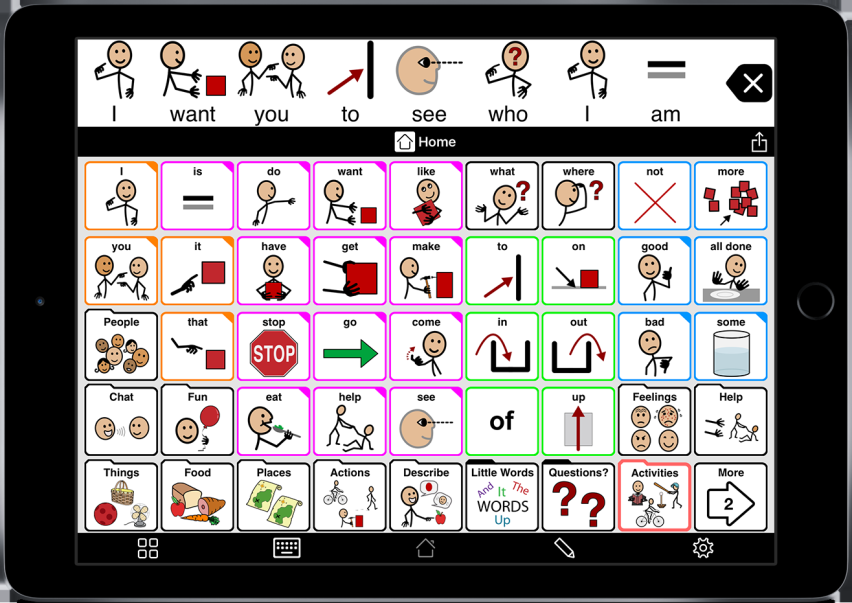We are frequently asked, “How do I transition an AAC user from PECS to some sort of speech output device?” There are three main reasons people want to move on from PECS.
- A communication device will give them a voice that speaks out loud.
- The PECS book is difficult to organize, manage and carry.
- The AAC user only knows how to request and ask for things.
We often hear: “He’s stuck at requesting” or “She is only asking for things”. We also hear “We can’t have a proper conversation” or “I want to know what he’s thinking” and “How can they tell me if something’s wrong?”
Introducing Core Words
If we look at all the reasons we communicate, requesting is a very small part of what we do to connect with other people. There are many other reasons we communicate. We give our opinion or expressed our feelings. We ask questions, tell stories and more.We need to add different kinds of words to enable full communication. We can’t rely on just “I want” and “I see”.
AAC learners can learn to communicate for all these reasons with core words. Core words are words that are most frequently used in everyday conversation. They are verbs like: stop, go, come, get; adjectives like: more, good, little; pronouns like: I, you, it, that; prepositions like: up, on, there. With words like these, there’s so much more to say.





